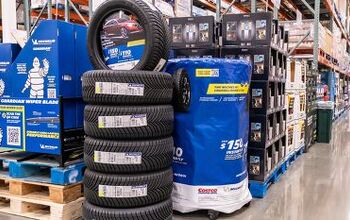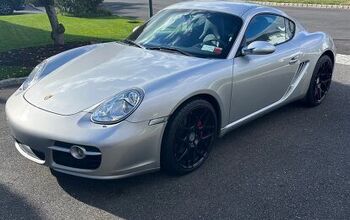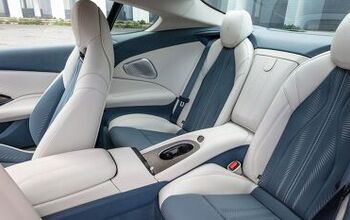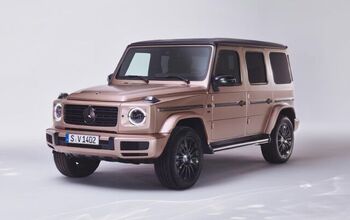With Chevrolet Camaro Sales Plunging, Camaro Inventory Has Ballooned To A 129-Day Supply
“Do you want to get in and out of your car easily and do you want to be able to back out of a tight parking spot?” Ford Mustang buyer and former Chevrolet Camaro shopper John Oglesby wrote to Car And Driver for its September 2016 issue. “If so, you need the Mustang.”
John Oglesby is truly representative of the market as a whole. After holding its position as the top dog in the segment for five years, the Chevrolet Camaro predictably lost its title to the Ford Mustang in 2015, the year of an all-new Mustang; the last year for the now-departed fifth-generation Chevrolet Camaro.
2016 hosted the launch of an all-new Chevrolet Camaro, but a return to sales leadership wasn’t in the cards. Not at any point since the nameplate’s 2009 return has the Camaro sold so poorly. Year-over-year, U.S. Camaro volume is down 15 percent compared with 2015, the Camaro’s previous worst year since returning.
Poor visibility, a premium price point, and styling that improved but was not significantly altered are not the only issues at play. General Motors is also making a concerted effort to decrease reliance on sales to daily rental companies. But demand is clearly below expectations, because Automotive News now reports (as we learned from GMInsideNews last week) that GM had a 129-day supply of 27,400 Camaros heading into August 2016.
If people aren’t buying and you keep on building, inventory is bound to pile up. No wonder significant incentives have kicked in to rid dealers of 2016 Camaros.
Ford’s supply of Mustangs is not as great as Chevrolet’s supply of Camaros, yet over the last three months, Ford is selling 80 percent more Mustangs than Chevrolet is selling Camaros. Automotive News says Ford had a 72-day supply of 26,600 Mustangs entering this month.
Meanwhile, in Dodge showrooms, where Fiat Chrysler Automobiles has reported 17,775 Challenger sales in the last three months — compared with 16,316 Camaro sales in Chevrolet stores — there was a 76-day supply of 16,500 Challengers at the beginning of August, Automotive News reports. Roughly 1.4 million passenger cars accounted for 62 days of industry-wide inventory as August began. Nearly 2.2 million light trucks equal 60 days of supply.
Just as sales figures don’t tell the whole story, neither do the numbers from the supply chain. Regardless, when supply hugely outweighs demand, prices must fall. For the Camaro, prices will have to fall far, and they’ll have to do so quickly.
Of the 26,299 new Camaros shown in Cars.com’s inventory, nearly 10,000 are 2017 models. This leaves less desirable 2016 models to fight for lot space — and buyers — with newer cars. Let’s be honest: at the same price point, which car are you going to take, the 2016 or 2017?
Relative to many other sporting cars, U.S. sales of the Camaro remain healthy. (UK Camaro sales? Not so much.) In July, for instance, when GM reported 5,520 Chevrolet Camaro sales, the BMW 2 Series, Mazda MX-5 Miata, Nissan 370Z, Scion FR-S, Fiat 124 Spider, Subaru BRZ combined for 4,826 sales. In an unusually strong July for the Volkswagen Golf GTI, Camaro sales were more than twice as strong. Upmarket, the Audi A5, BMW 4 Series, Infiniti Q60, and Lexus RC combined for 3,969 sales.
Compared with the Mustang and Challenger, however, the Camaro’s share of the three-car category is down to 27 percent so far this year from 30 percent one year ago and 41 percent during the first seven months of 2014.
Compared with the Camaro’s own history, U.S. sales in 2016 are on track to total roughly 66,000 units, approximately the same total the Camaro managed 20 years ago, prior to sharp declines that led to the car’s demise.
GM averaged 84,000 Camaro sales per year between 2010 and 2014, never dropping below the 80K marker.
Compared with GM’s expectations for the new, sixth-gen Camaro, sales today are clearly sub-par. Otherwise, GM wouldn’t have built so many.
Timothy Cain is the founder of GoodCarBadCar.net, which obsesses over the free and frequent publication of U.S. and Canadian auto sales figures. Follow on Twitter @goodcarbadcar and on Facebook.
More by Timothy Cain
Latest Car Reviews
Read moreLatest Product Reviews
Read moreRecent Comments
- ChristianWimmer This would be pretty cool - if it kept the cool front end of the standard/AMG G-Class models. The front ends of current Mercedes’ EVs just look lame.
- Master Baiter The new Model 3 Performance is actually tempting, in spite of the crappy ergonomics. 0-60 in under 3 seconds, which is faster than a C8 Corvette, plus it has a back seat and two trunks. And comparable in weight to a BMW M3.
- SCE to AUX The Commies have landed.
- Arthur Dailey The longest we have ever kept a car was 13 years for a Kia Rondo. Only ever had to perform routine 'wear and tear' maintenance. Brake jobs, tire replacements, fluids replacements (per mfg specs), battery replacement, etc. All in all it was an entirely positive ownership experience. The worst ownership experiences from oldest to newest were Ford, Chrysler and Hyundai.Neutral regarding GM, Honda, Nissan (two good, one not so good) and VW (3 good and 1 terrible). Experiences with other manufacturers were all too short to objectively comment on.
- MaintenanceCosts Two-speed transfer case and lockable differentials are essential for getting over the curb in Beverly Hills to park on the sidewalk.



































Comments
Join the conversation
A friend of mine bought a new V8 Camaro a couple weeks ago. It is my intention to avoid him until the new wears off so he doesn't ask me for an opinion about it.
I got a chance to test drive the car. Go test drive one yourselves, its fantastic. If I were to buy a sporty car, the Camaro SS ragtop gets my dollars easily. That engine is sublime. I think the sales boil down the the fact that Ford sells you a V8 for far less money. Also Ford sells a V6 in the base Mustang; GM sells you a turbo-4. Regardless of any actual difference in performance a V6 is seen as a better engine than a turbo-4 which is seen by that demographic a "riceburner" engine. The Challenger's success is very easy to explain, its gorgeous. The Mustang looks like a feminine eurocar; the Challenger oozes Americana.